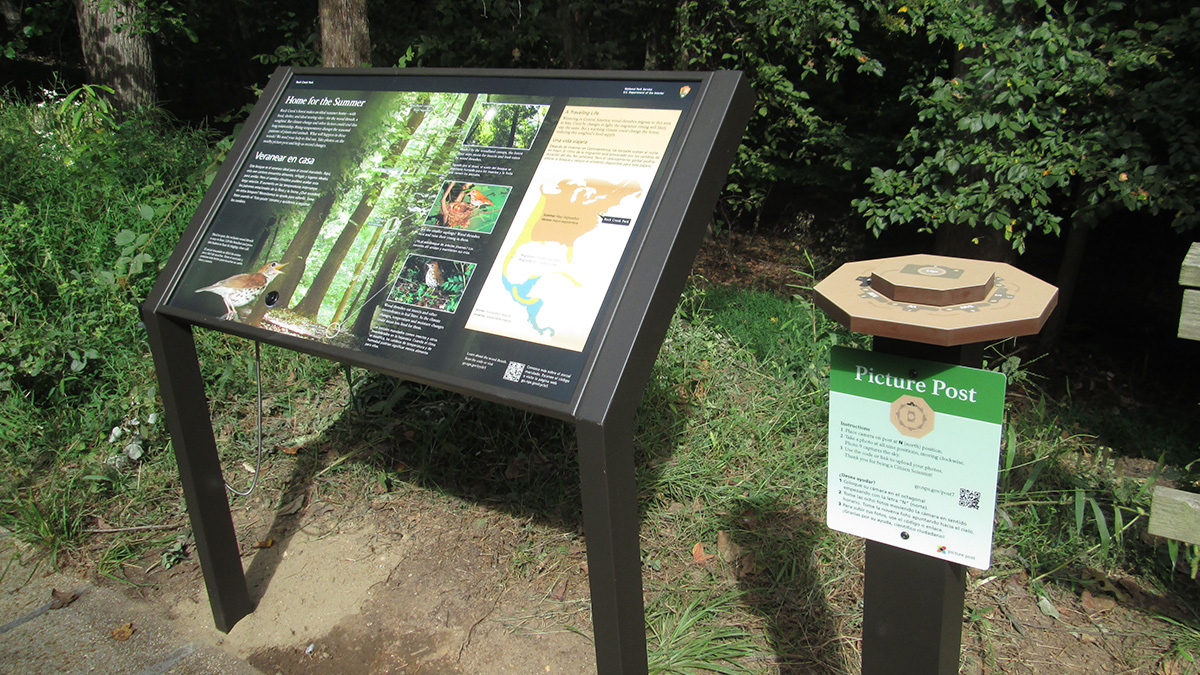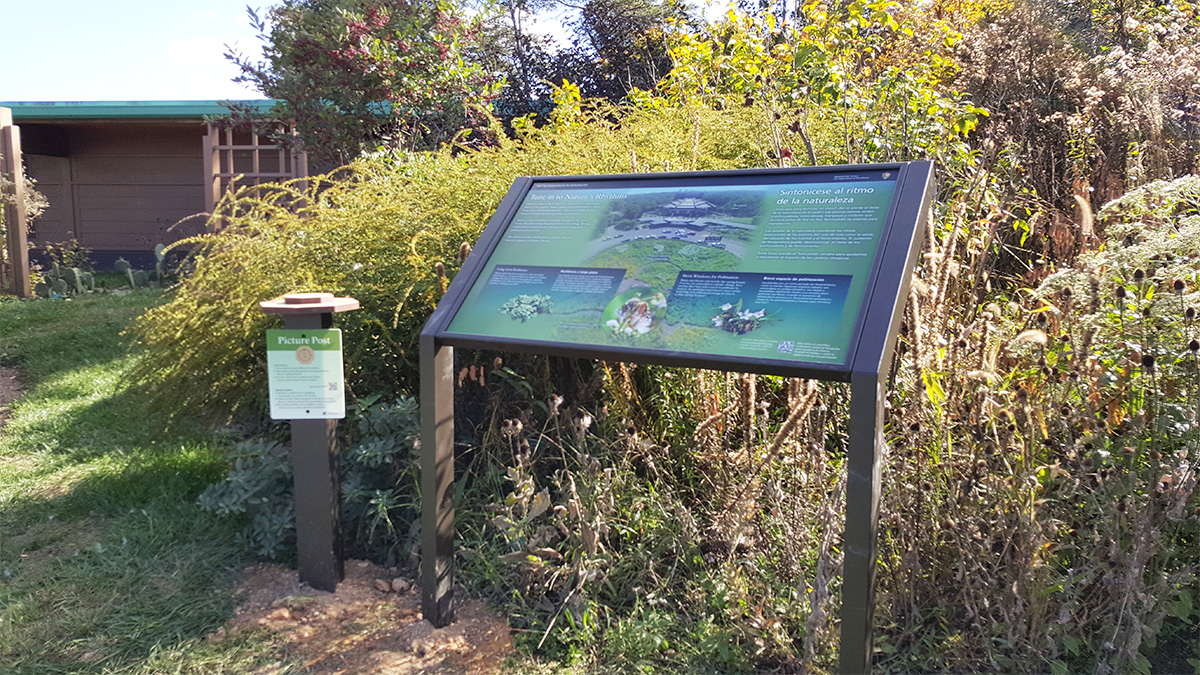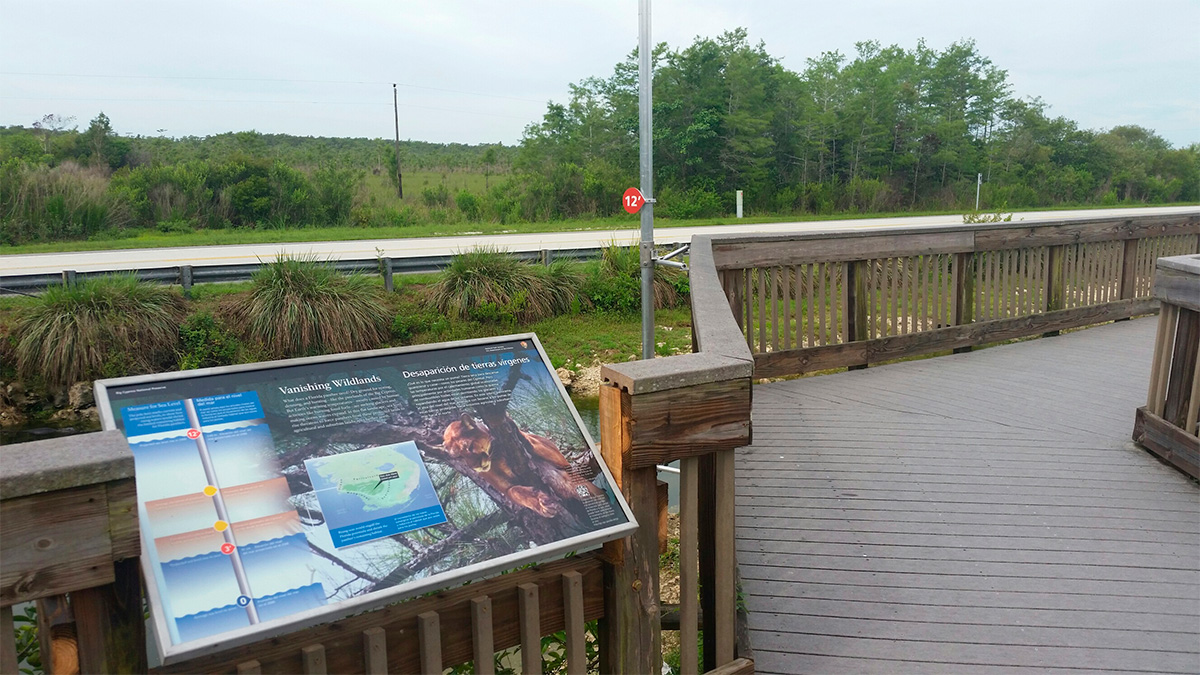Climate Change is one of the most talked about topics in the world today. For the past three years, Pannier has been working with the National Park Service (NPS) as part of a Plan, Design, Build contract to design wayside exhibits that provide awareness of the impacts of Climate Change in different areas of the country. This project was awarded as part of Pannier’s IDIQ contract with NPS.
The Climate Change project was developed in two phases: phase one focused on sea level rise and phase two focused on phenology. Custom built sea level rise markers indicate current and projected sea levels to show how rising waters would affect the areas. Phase two allows visitors to become a Citizen Scientist. Picture posts are located within the parks and instruct visitors to capture landscape images, to then upload their pictures to a website. This website maintains a visual database that allows visitors to see the changes in the landscape throughout the years. Wayside exhibits interpret how climate change has negatively affected areas of the park.
Pannier led a group of designers and writers to create the wayside panels. Weekly conference calls allowed Pannier, designers and writers to communicate with the staff across all twelve involved parks, located at different corners of the country. With Climate Change being such a sensitive subject in the world today, much attention was paid to getting the facts correct without introducing any slant or bias.
Interpretive wayside exhibits were created to educate audiences about the impacts of climate change and climate friendly technologies. The waysides highlight impacts to local, site-specific resources and also call attention to regional, national and global implications of climate change. Nine of the twelve panels also include Spanish translations. Each wayside exhibit also includes a QR code that sends visitors to a microsite to dig deeper than what the wayside can offer.
Along with the exhibit bases and frames, Pannier’s drafting engineer and fabricators worked numerous hours to develop the Sea Level Rise markers. Since each site is different a lot of attention needed to be paid to assure that all the markers could work in each environment.
“THIS WAS DEFINITELY ONE OF THE MORE CHALLENGING PROJECTS THAT WE’VE APPROACHED IN RECENT YEARS, DUE NOT ONLY TO THE COMPLEXITY OF THE SUBJECT, BUT ALSO THE WIDE RANGE OF LOCATIONS. FROM A RESEARCH STANDPOINT, OUR TEAM OF PLANNERS AND DESIGNERS WORKED HARD TO ADDRESS ALL CONCERNS. FROM A FABRICATION STANDPOINT, WE NEEDED TO DESIGN A POLE THAT ROSE 20 FEET IN THE AIR, OUT OF THE WATER, INCLUDED ACCURATE SEA LEVEL RISE MARKERS (ALSO FABRICATED IN-HOUSE), AND WAS NOT ONLY DURABLE, BUT ABLE TO BE INSTALLED AT EACH LOCATION USING BASIC TOOLS, ALL WHILE ACCOUNTING FOR MUCH VARIABILITY IN THE ENVIRONMENT, NEARBY STRUCTURES, AND THAT LOCATION’S PARTICULAR DIMENSIONS. NEEDLESS TO SAY, WE HAD OUR HANDS FULL. BUT I’M PROUD OF THE PRODUCT THAT WE CREATED, AND PROUD OF OUR EMPLOYEES. EVERYTHING CAME TOGETHER, SHIPPED ON TIME, AND ADDRESSED EVERY CONCERN WE HEARD.” – JON KOVACH, PROJECT MANAGER, ART & MARKETING DIRECTOR, PANNIER GRAPHICS




